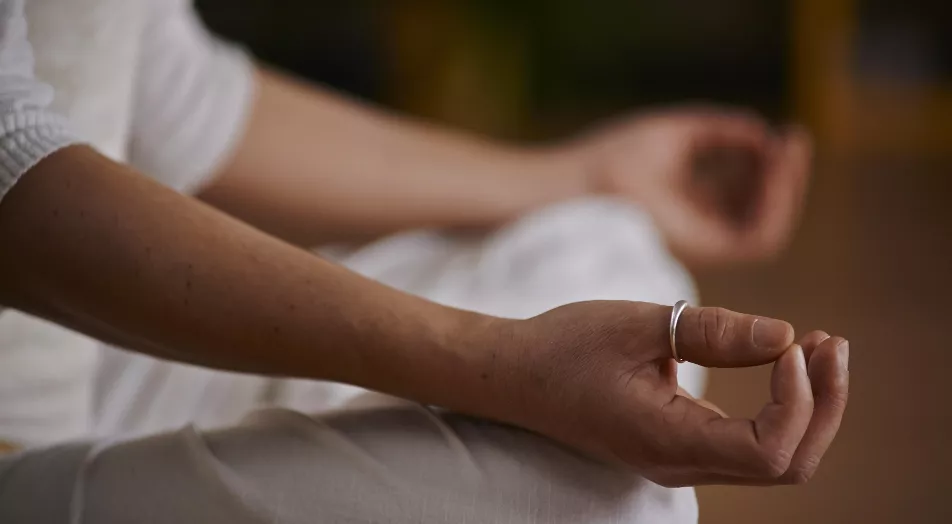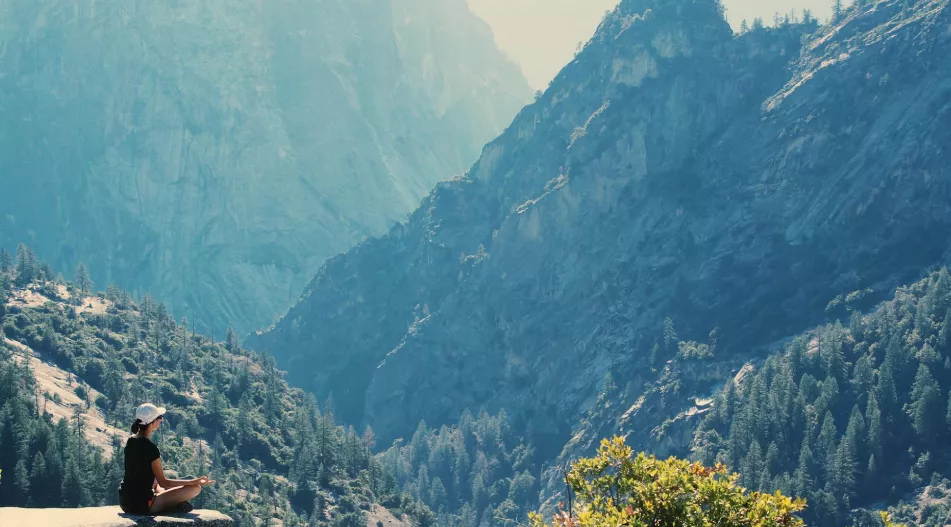Choosing the right yoga retreat can really change your wellness journey. Whether you want to relax, recharge, or deepen your practice, there’s a retreat out there that fits your needs. This guide will help you figure out how to select the perfect yoga retreat that aligns with your goals and aspirations.
Key Takeaways
- Define your yoga goals clearly before searching for a retreat.
- Explore various types of yoga retreats to find what suits you best.
- Consider the location carefully for accessibility and ambiance.
- Research the yoga instructor to ensure their style matches your preferences.
- Pay attention to the amenities and food options to enhance your experience.
Understanding Your Yoga Goals
Before you even start browsing through yoga retreat brochures, it’s really important to take a moment and think about why you want to go on a retreat in the first place. What are you hoping to get out of it? Are you looking to deepen your practice, escape the daily grind, or maybe even work through some personal stuff? Figuring this out early on will make choosing the right retreat so much easier. It’s like setting a destination before you start a road trip – you need to know where you’re going!
Defining Your Intentions
Okay, so you’re thinking about a yoga retreat. Great! But what’s the real reason? Is it just to get away? Or is there something deeper you’re searching for? Maybe you want to improve your flexibility, learn more about meditation, or just find some peace and quiet. Really dig deep and define your intentions. This will help you narrow down your options and find a retreat that actually meets your needs. Think about what aspects of compassionate living appeal to you.
Identifying Your Desired Outcomes
Once you know your intentions, it’s time to think about what you want to achieve. What does success look like for you on this retreat? Do you want to leave feeling refreshed and energized? Do you want to have a better understanding of yoga philosophy? Or maybe you want to make some lasting lifestyle changes. Be specific! The more clear you are about your desired outcomes, the better you can evaluate whether a retreat is the right fit. Consider if you want to immerse yourself in yoga and improve your flexibility.
Setting Realistic Expectations
Okay, let’s be real. A yoga retreat isn’t a magic bullet. It’s not going to solve all your problems or turn you into a yoga master overnight. It’s important to set realistic expectations. You’re not going to leave completely transformed, but you can make progress towards your goals. You can learn new skills, gain new insights, and connect with like-minded people. Just remember to be patient with yourself and enjoy the journey. Think about the central theme of the retreat and how it aligns with your expectations.
It’s easy to get caught up in the hype and think a retreat will be a life-changing experience. And it might be! But it’s more likely to be a stepping stone. A chance to recharge, refocus, and learn something new. Go in with an open mind and a willingness to learn, and you’ll get the most out of it.
Exploring Different Types of Yoga Retreats
Yoga retreats aren’t all the same! It’s not just about downward dog and green smoothies (though those are definitely part of it for some). There’s a whole spectrum of retreats out there, each catering to different needs and goals. It’s important to find one that really clicks with what you’re hoping to get out of the experience. Let’s take a look at some popular types.
Detox and Cleansing Retreats
These retreats are all about hitting the reset button. They often combine yoga with specific dietary plans and other practices designed to help your body eliminate toxins. Think lots of fresh juices, plant-based meals, and maybe even some guided fasting. The yoga itself will usually focus on poses that support digestion and circulation. It’s a great way to feel lighter, more energized, and ready to take on the world. You might find that a beginner’s yoga retreat is a good starting point.
Adventure Yoga Retreats
If you’re the type who gets restless just lying on a beach, an adventure yoga retreat might be right up your alley. These retreats combine yoga with outdoor activities like hiking, surfing, rock climbing, or even kayaking. It’s a chance to challenge yourself physically, connect with nature, and deepen your yoga practice all at the same time. Imagine doing sun salutations on a mountaintop or finding your balance on a paddleboard before settling into savasana. It’s all about finding that sweet spot between exertion and relaxation.
Mindfulness and Meditation Retreats
In our busy, always-on world, it can be tough to find moments of true peace and quiet. Mindfulness and meditation retreats offer a sanctuary from the noise. These retreats emphasize practices like mindfulness meditation, walking meditation, and silent reflection. Yoga is often incorporated as a way to prepare the body and mind for deeper meditative states. You’ll learn techniques for cultivating present-moment awareness and reducing stress. It’s a chance to reconnect with yourself and find a sense of inner calm.
Choosing the right retreat really depends on what you’re looking for. Do you want to sweat and push your physical limits? Or are you craving stillness and introspection? Maybe you’re somewhere in between. Take some time to reflect on your needs and desires, and you’ll be well on your way to finding the perfect yoga retreat for you.
Here’s a quick comparison table:
| Retreat Type | Focus | Activities | Benefits |
|---|---|---|---|
| Detox & Cleansing | Eliminating toxins | Yoga, healthy eating, fasting | Increased energy, improved digestion |
| Adventure Yoga | Physical challenge & nature | Yoga, hiking, surfing | Increased strength, connection with nature |
| Mindfulness & Meditation | Inner peace & stress reduction | Yoga, meditation, silent reflection | Reduced stress, increased self-awareness |
Choosing the Right Location
Location, location, location! It’s not just for real estate. Where you go for your yoga retreat can seriously impact your whole experience. Think about it: a peaceful beach vibe is way different than a mountain retreat. Let’s break down how to pick the perfect spot.
Evaluating Accessibility and Amenities
First things first, how easy is it to get there? A super remote location might sound dreamy, but if it involves multiple layovers and a bumpy jeep ride, that initial stress could undo all your relaxation efforts. Consider these points:
- Flights: Are there direct flights available, or will you be spending half your vacation in transit?
- Travel Time: How long will it take to reach the retreat from the airport or train station?
- Local Transport: Once you’re there, can you easily get around if you want to explore?
Also, think about amenities. Do you need reliable Wi-Fi? Are you okay with rustic accommodations, or do you prefer something more luxurious? These things matter!
Considering Natural Surroundings
What kind of scenery makes you feel at peace? Are you a beach person, a mountain lover, or someone who thrives in the forest? The natural surroundings can really boost your yoga practice and overall well-being. For example, mountain and forest retreats can provide a serene backdrop for your yoga practice. The elevation and surrounding trees promote a sense of tranquility and grounding. Here, you can engage in nature-based activities like guided hikes, meditation walks, or nature photography during your downtime.
I once went on a retreat in the desert, and while the sunsets were amazing, I realized I’m definitely a forest person. The dry heat and lack of greenery just didn’t do it for me. Now I always make sure to pick a location that resonates with my soul.
Assessing Climate and Environment
Weather can make or break a trip. Do you thrive in sunshine, or do you prefer cooler temperatures? Check the climate for the time of year you’re planning to go. Also, consider the environment. Are there any potential hazards, like mosquitoes or strong UV rays? Pack accordingly and be prepared. If you dislike heat, avoid tropical locations during their hottest months.
Here’s a quick guide:
| Climate Preference | Best Locations |
|---|---|
| Hot & Sunny | Tropical beaches, deserts (spring/fall) |
| Cool & Mild | Mountains, forests, coastal areas (spring/fall) |
| Cold & Snowy | Mountain retreats (winter) |
Selecting the Ideal Yoga Teacher
Your yoga retreat experience hinges significantly on the quality of your instructor. It’s not just about poses; it’s about connection, guidance, and creating a safe space for exploration. Let’s look at how to find the right fit.
Researching Instructor Backgrounds
Dig into the backgrounds of the instructors leading the retreat. Don’t just look at certifications; consider their years of experience and the breadth of their training. Has the instructor completed advanced studies in yoga philosophy or specialized areas like prenatal yoga or yoga for trauma? Understanding their educational journey can give you insight into their depth of knowledge. Look for teachers who have a solid foundation and a commitment to ongoing learning. It’s also worth checking if they are registered with a professional organization like Yoga Alliance. This can give you some assurance of their training and ethical standards. You can also check if they have experience with yoga teacher training.
Understanding Teaching Styles
Yoga isn’t one-size-fits-all, and neither are yoga teachers. Some instructors are very hands-on, offering physical adjustments to deepen your poses. Others prefer a more hands-off approach, focusing on verbal cues and encouraging you to find your own alignment. Some teachers emphasize the spiritual aspects of yoga, incorporating meditation and chanting into their classes. Others focus more on the physical benefits, leading a more athletic and challenging practice. Think about what you’re looking for in a yoga class and try to find a teacher whose style aligns with your preferences.
Consider these points:
- Do you prefer a fast-paced or slow-paced class?
- Do you want a lot of hands-on adjustments, or do you prefer to be left to your own devices?
- Are you interested in the spiritual aspects of yoga, or are you more focused on the physical workout?
It’s important to remember that there’s no right or wrong teaching style. It’s all about finding what works best for you.
Reading Reviews and Testimonials
See what other students have to say about the instructor. Look for reviews that offer specific details about the teacher’s strengths and weaknesses. Did students find the teacher to be knowledgeable, compassionate, and supportive? Did they feel challenged and inspired by the classes? Be wary of reviews that are overly positive or negative, as they may not be genuine. Look for a range of opinions and try to get a sense of the teacher’s overall reputation. Also, check if the retreat offers personalized attention and guidance. Smaller group sizes often ensure more individual instruction and support.
Here’s a simple guide to help you evaluate reviews:
| Aspect | Questions to Ask |
|---|---|
| Knowledge | Do reviewers mention the teacher’s depth of knowledge? |
| Compassion | Do they describe the teacher as caring and supportive? |
| Clarity | Was the teacher able to explain concepts clearly and concisely? |
| Adaptability | Did the teacher adapt the class to meet the needs of all students? |
| Inspiration | Did the teacher inspire students to deepen their practice? |
Evaluating Retreat Amenities and Activities
Choosing a yoga retreat isn’t just about the yoga itself; it’s also about the whole experience. What else is available to you during your stay? What will you be doing in between yoga sessions? These are important questions to consider.
Assessing Accommodation Quality
First, let’s talk about where you’ll be sleeping. Accommodation quality can significantly impact your overall retreat experience. Are you okay with a shared dorm, or do you prefer a private room with all the bells and whistles? Think about what makes you comfortable and relaxed. Some things to consider:
- Cleanliness: Read reviews to see what others say about the cleanliness of the accommodations.
- Comfort: Are the beds comfortable? Is there air conditioning or heating, depending on the climate?
- Privacy: Do you have enough personal space to unwind and recharge?
Exploring Additional Wellness Services
Many retreats offer additional wellness services beyond yoga. These can include things like:
- Massage therapy
- Acupuncture
- Nutritional counseling
- Meditation sessions
If you’re looking to really pamper yourself and focus on your well-being, these extra services can be a huge plus. Think about what other treatments or therapies you’re interested in and see if the retreat offers them. A wide range of activities ensures that there is something for everyone.
Understanding Daily Schedules
Take a close look at the daily schedule. What does a typical day look like? How much free time do you have? Is the schedule packed with activities, or is there plenty of time for relaxation and exploration? A good balance is key. You don’t want to feel rushed or overwhelmed, but you also don’t want to be bored. Consider these points:
- Yoga sessions: How many sessions per day? What style of yoga is taught?
- Meal times: When are meals served? Are there snacks available throughout the day?
- Free time: How much time is allocated for personal activities, rest, or exploring the surrounding area?
It’s important to find a retreat that aligns with your personal preferences and needs. Don’t be afraid to ask questions and do your research to ensure you’re making the right choice. A well-rounded retreat experience can be transformative, leaving you feeling refreshed, rejuvenated, and inspired.
Understanding the Importance of Food and Nutrition
Food is a big deal on a yoga retreat. It’s not just about eating; it’s about fueling your body and mind to get the most out of your experience. What you eat can seriously impact how you feel during your yoga sessions and other activities. Let’s get into the details.
Exploring Dietary Options
Yoga retreats often cater to different dietary needs and preferences. You’ll commonly find vegetarian and vegan options, which align with the ahimsa principle of non-violence. But it’s not just about labels. Some retreats go further, offering raw food or specific allergy-friendly menus. Before you book, check what’s available and if they can accommodate your needs. It’s a bummer to arrive and find out you can’t eat half the meals!
Considering Food Quality and Sourcing
Where your food comes from matters. Many retreats emphasize organic, locally sourced ingredients. This isn’t just a trendy thing; it’s about getting the most nutrients and supporting sustainable practices. Knowing that your meals are organic and fresh can make a big difference in how you feel. Plus, some retreats even have their own gardens, which is pretty cool.
Assessing Meal Plans and Preparation
Take a look at the meal plans. Are they structured, or is it more of a buffet situation? Do they offer cooking classes or nutrition workshops? Understanding how meals are planned and prepared can give you insight into the retreat’s overall philosophy. Some retreats focus on Ayurvedic principles, tailoring meals to your dosha. Others might offer detoxifying diets. It’s all about finding what resonates with you.
Food at a yoga retreat isn’t just about sustenance; it’s an integral part of the wellness journey. It’s about nourishing your body with intention and aligning your diet with your yoga practice. Choosing a retreat that prioritizes healthy, mindful eating can significantly enhance your overall experience.
Here’s a quick look at what you might find:
- Vegetarian/Vegan: Plant-based meals focusing on fruits, vegetables, grains, and legumes.
- Organic: Foods grown without pesticides or synthetic fertilizers.
- Raw Food: Uncooked, unprocessed foods to preserve nutrients.
- Ayurvedic: Meals tailored to balance your dosha (vata, pitta, kapha).
Budgeting for Your Yoga Retreat

Planning a yoga retreat is super exciting, but let’s be real, it’s important to think about the money side of things too. You don’t want to get stuck with unexpected costs or feel stressed about your finances while you’re trying to relax and recharge. Let’s break down how to budget effectively for your wellness journey.
Understanding Costs and Inclusions
First things first, figure out what the retreat price actually covers. Many retreats are all-inclusive, which is great because it means your accommodation, meals, and yoga sessions are bundled into one price. But always double-check the fine print. Does it include airport transfers? What about excursions or spa treatments? Some retreats might have extra charges for things like private yoga sessions or special dietary needs. Knowing exactly what’s included will help you avoid surprises later on. It’s also a good idea to compare the startup expenses of different retreats to see what you get for your money.
Exploring Payment Plans
Don’t freak out if the total cost of the retreat seems like a lot. Many places offer payment plans to make it more manageable. This could involve paying a deposit upfront and then spreading the remaining balance over several months. Some retreats might even offer early bird discounts if you book well in advance. It’s always worth asking about payment options to see if you can find something that works for your budget.
Identifying Additional Expenses
Okay, so you’ve figured out the retreat cost and payment plan. Now, let’s think about those extra expenses that can easily add up. The big one is travel. Flights, trains, or car rentals to get to the retreat location can be a significant chunk of your budget. Don’t forget about travel insurance – it’s a must-have in case of unexpected cancellations or medical emergencies. And then there are the little things: souvenirs, snacks, drinks, and maybe a massage or two. It’s a good idea to estimate these costs and add them to your overall budget so you’re not caught off guard. Also, be aware of any hidden fees that might pop up during your stay.
It’s easy to get caught up in the excitement of planning a yoga retreat, but taking the time to create a realistic budget will help you enjoy the experience without financial stress. Consider all the costs involved, from the retreat itself to travel and extras, and explore payment options to make it more affordable. A little planning goes a long way in ensuring a relaxing and rejuvenating retreat.
Wrapping It Up
Choosing the right yoga retreat can really change your wellness journey for the better. It’s all about finding a place that feels right for you, whether you want to chill out, learn new skills, or connect with others. Take your time to think about what you want from the experience. Look for retreats that match your goals and vibe. Remember, it’s not just about the yoga; it’s about the whole experience. So, do your homework, trust your gut, and get ready for a journey that could refresh your mind and body.
Frequently Asked Questions
What should I think about when choosing a yoga retreat?
Start by figuring out what you want to achieve. Do you want to relax, learn new skills, or connect with others? Knowing your goals will help you find the right retreat.
What types of yoga retreats are available?
There are many kinds of retreats, like detox retreats that focus on cleansing the body, adventure retreats that include activities like hiking, and mindfulness retreats that center on meditation.
How do I pick the best location for my retreat?
Consider how easy it is to get there, the beauty of the area, and what facilities are available. The right setting can help you relax and feel inspired.
Why is it important to choose the right yoga teacher?
A good teacher can make a big difference in your retreat experience. Look for someone with a strong background, a teaching style you like, and positive reviews from others.
What should I know about food at yoga retreats?
Food is a key part of the retreat experience. Check what dietary options are available, how the food is sourced, and if meal plans fit your needs.
How can I budget for my yoga retreat?
Make sure to understand all costs involved, including what’s included in the price. Look for payment plans and think about any extra expenses you might have.
Everything you need—flights, hotels, car rentals, bike rentals, taxis, and eSIMs for travelers—book it all with Voyage Magnets.




